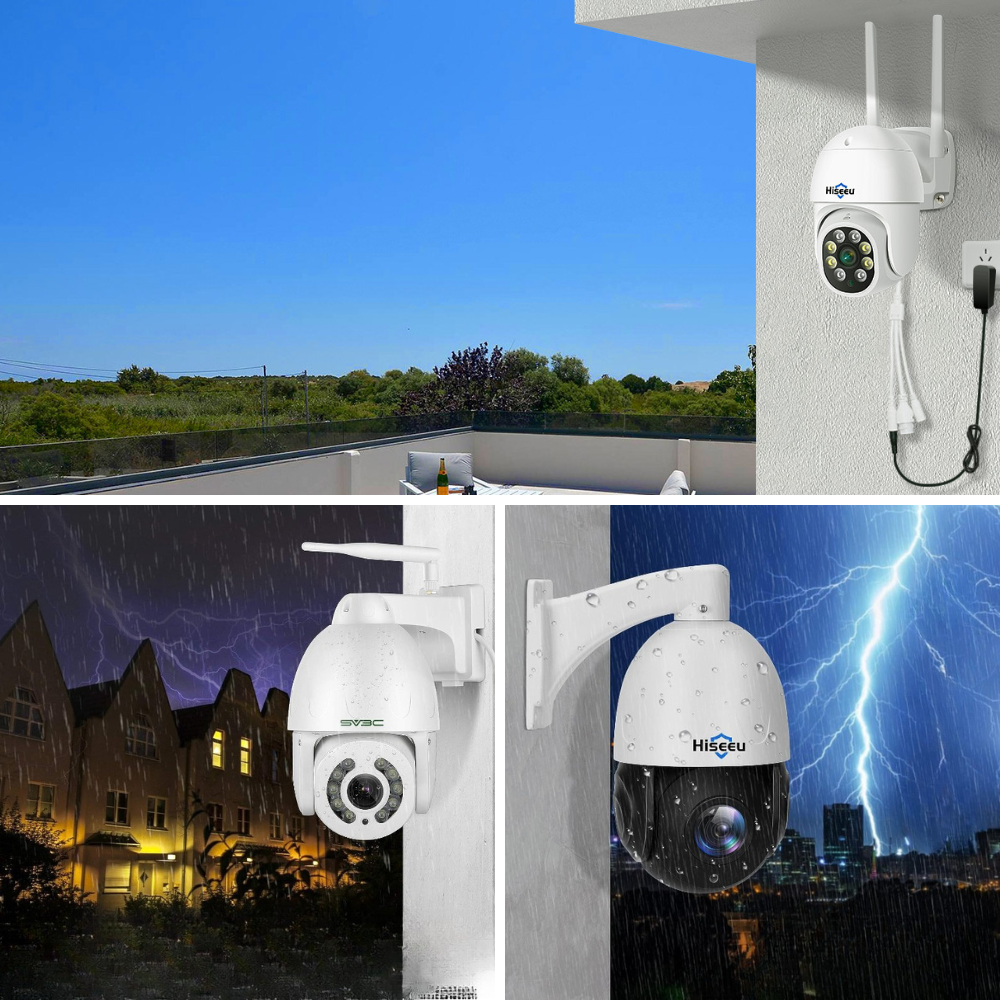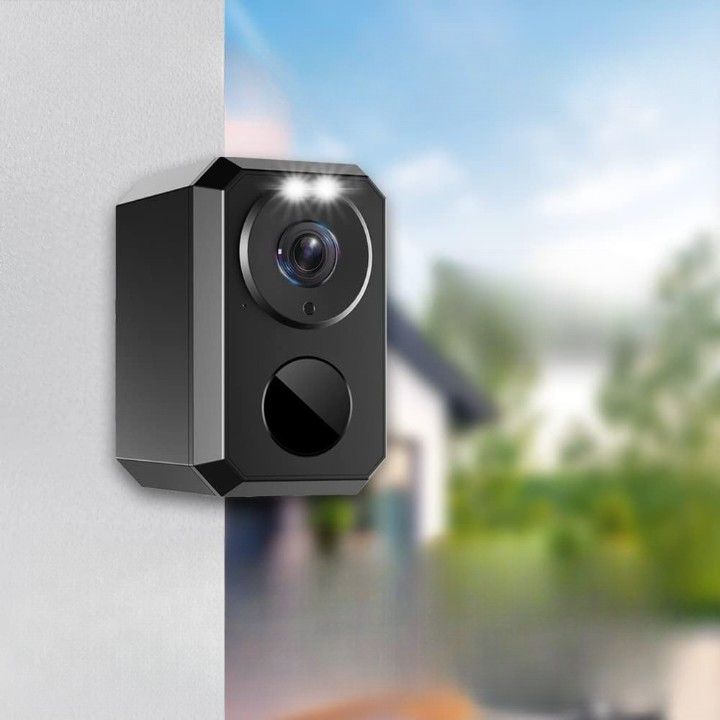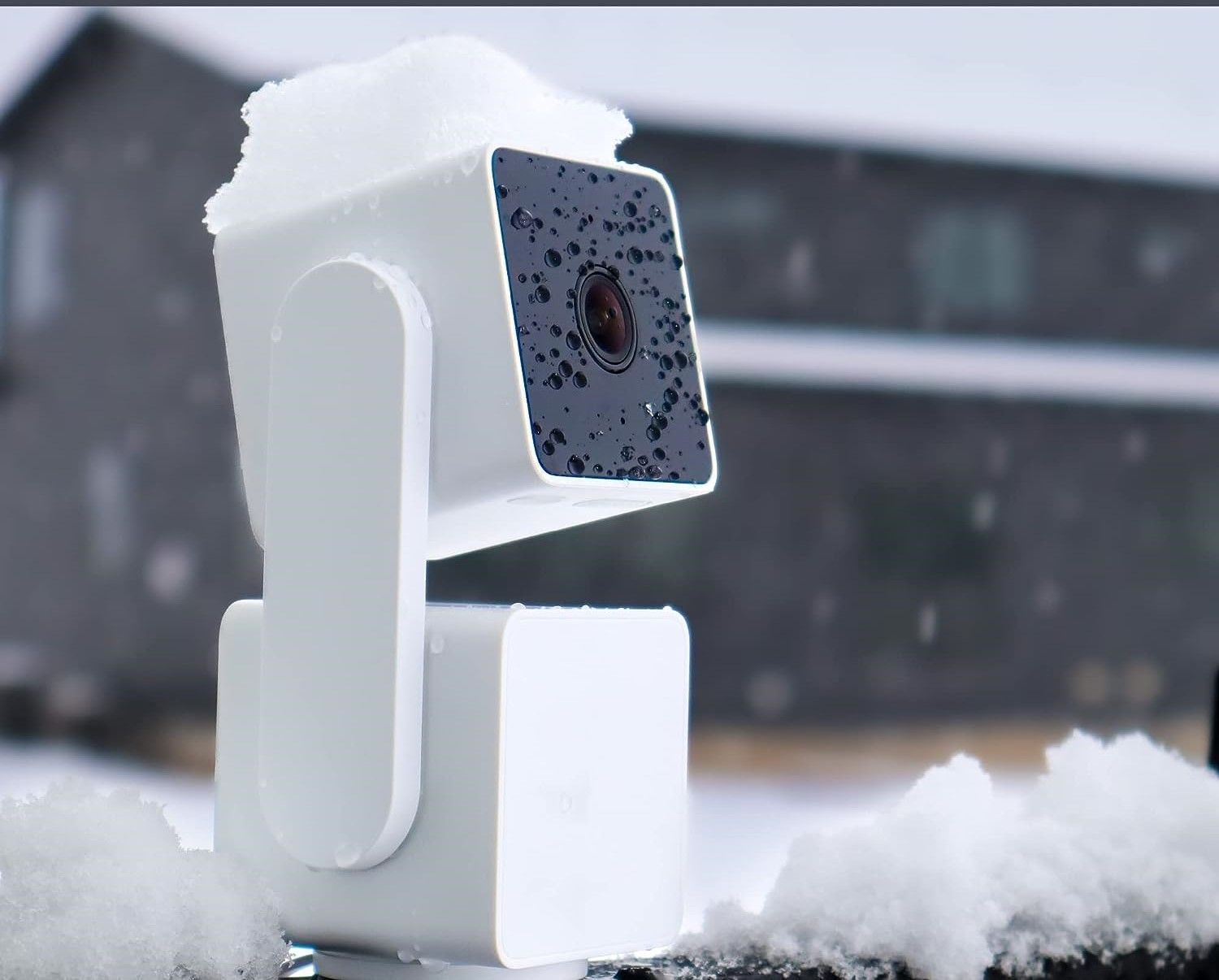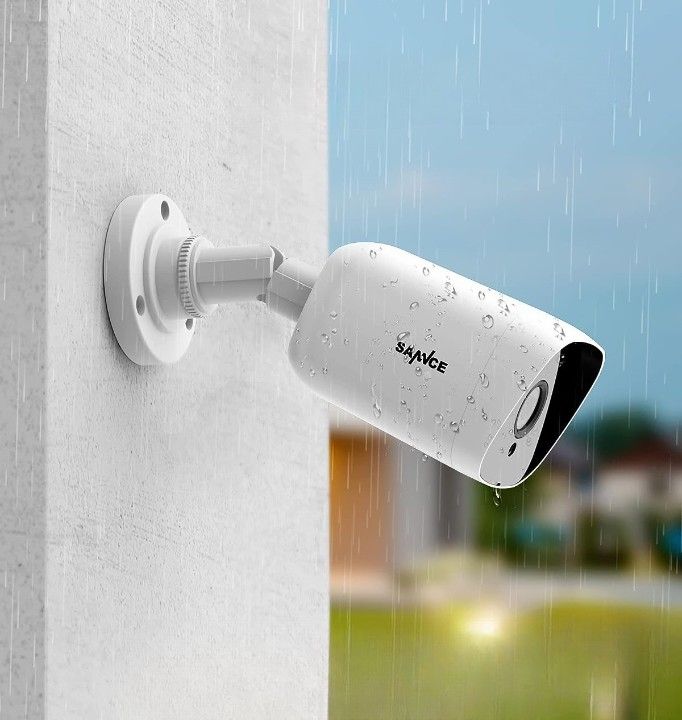In the world of modern technology, thermal imaging cameras have emerged as indispensable tools, enabling us to perceive and understand the invisible realm of thermal energy. Also known as thermal cameras or infrared cameras, these devices have revolutionized various industries, from construction and manufacturing to healthcare and public safety. In this article, we will explore the fascinating world of thermal imaging and the remarkable capabilities of thermal imaging cameras.
Understanding Thermal Imaging
Thermal imaging is a process that captures the heat emitted by objects and converts it into a visible image. Unlike visible light cameras, which rely on the visible light spectrum, thermal imaging cameras operate in the infrared part of the electromagnetic spectrum. This unique feature allows them to detect temperature differences, making them invaluable for a wide range of applications.
How Thermal Imaging Cameras Work
Thermal imaging cameras function by capturing the infrared radiation emitted by objects, even in complete darkness. These cameras use a lens to focus the infrared light onto a special sensor called a microbolometer. The microbolometer then measures the temperature of each pixel and creates a thermal image based on these temperature readings.
Key Features of Thermal Imaging Cameras
Temperature Range:
Thermal imaging cameras come with a wide temperature range, enabling them to measure temperatures from as low as -6°F to as high as 1,472°F (-20°C to 800°C). This versatility makes them suitable for various applications, from detecting air leaks to identifying electrical faults.
Adjustable Focus:
Some thermal cameras have adjustable focus most come with fixed focus, allowing users to fine-tune the image for their specific needs. This feature ensures that the camera can capture detailed images at different distances.
Multi-Spectral Dynamic Imaging:
Advanced thermal imaging cameras offer multi-spectral dynamic imaging, which enhances their ability to detect subtle temperature variations and hot spots.
High-Resolution Thermal Images:
Thermal imaging cameras can capture high-resolution thermal images, such as those with a resolution of 320 x 240 pixels, providing detailed information about heat sources.
Compact and Portable:
Compact thermal cameras are lightweight and portable, making them suitable for on-the-go applications. Some even come with USB-C plugs for easy connectivity to computers and smartphones.
Applications of Thermal Imaging Cameras
Building Inspection: Detecting moisture, heat loss, and electrical issues.
Industrial Maintenance: Identifying overheating machinery and electrical components.
Public Safety: Locating missing persons, spotting wildfires, and detecting concealed weapons.
Healthcare: Monitoring body temperature and diagnosing illnesses.
Environmental Conservation: Studying wildlife behavior and assessing forest health.
Security: Monitoring high-security areas and tracking intruders.
Energy Efficiency: Evaluating insulation and identifying energy-efficient solutions.
Firefighting: Locating hot spots and assessing fire damage.


What are the limitations of thermal cameras?
Thermal cameras are incredibly useful tools for providing a range of information, but certain limitations should be kept in mind.
Firstly, they have limited resolution. The data provided by thermal cameras is usually only around one to six pixels across the image or video they provide, which means any finer details may not come through in the results it provides. This limitation can make them less effective when trying to identify smaller objects or features from a distance.
Secondly, their field of view can be quite narrow compared to other imaging techniques such as regular digital cameras. While this isn’t usually an issue if you’re using them for short distances and small areas, it does become an issue when attempting to capture large images over long distances as the camera has difficulty picking up everything within its sight due to its limited field of view.
Thirdly, thermal cameras require some kind of outside source for power to work properly - most commonly either mains electricity or batteries - so you need access to that before being able to use it in remote locations. Additionally, these sources also heavily limit what sort of environments the thermal camera will be suitable for (as they might cause unwanted reflections) and how long it can be used without needing recharging/replacement depending on your setup/power source type
Finally - and perhaps most importantly - thermal cameras struggle with dynamic ranges because temperatures differ greatly between different objects and materials so having a single accurate reading across all of them is difficult at best and impossible at worst depending on why you’re taking readings; Which makes temperature measurements accurate at best guess with their results rather than exact calculations like other imaging techniques such as X-Ray machines would provide instead.
Can thermal cameras be used during the day?
Yes, thermal cameras can be used during the day, though with less effectiveness than at night due to direct sunlight interfering with their operation. Thermal cameras rely on infrared radiation (IR) which is emitted by all objects based on their temperatures. The hotter an object is the more IR it emits, the visible light camera, and vice versa. During the day, this infrared radiation is overpowered by solar energy or sunlight making it difficult for such cameras to distinguish between objects in broad daylight.
However, they can still be used effectively despite these limitations depending on certain parameters like the contrast between surfaces of different temperatures; if a hot surface like pavement meets a cold surface like grass then there’s enough of a difference that these cameras can pick up even in bright sunlight conditions allowing them to detect vehicles and people even when they are far away from each other. There are also various technologies available today such as advanced lens filters and active cooling systems that help improve performance during daytime operations even further so you get good-quality images and videos without any issues.
How high should a thermal imaging camera be?
When it comes to determining the optimal height for a thermal imaging camera, several factors need to be taken into consideration.
First, you'll want to consider the intended application of the camera. For example, if it's being used for surveillance purposes, then ideally the camera should be placed at heights between 25-30 feet so that it can cover as much area as possible and have a wide field of view. On the other hand, if this device is being utilized in more industrial settings such as inspecting power lines or mechanics systems, then placing it around 10-15 feet will usually suffice and provide detailed readings with sufficient accuracy. Second, keep in mind that any obstructions or reflections from swaying objects like branches will affect your imaging results due to changes in IR Radiation Levels (IRL). Therefore make sure these elements are minimized before installing your thermal imaging camera by selecting an appropriate height and angle that can allow unobstructed views of potential targets below. Additionally, ensure your installation site has minimal clutter or debris since these items interfere with heat signatures coming from targeted objects/areas.
Finally, another factor is related to safety when mounting cameras on high walls/edges etc., make sure adequate measures are taken before installation including ground inspections and verifying all nuts & bolts, etc., are firmly attached for maximum stability during windy conditions or sudden temperature drops, etc., if needed you may opt for specialized mounting devices designed for harshest outdoor climates available on most marketplaces online today!
What parameters are required by the thermal imaging camera?
Thermal imaging cameras, also known as infrared cameras, are used to record thermal data and convert it into an image that can be seen on a monitor. They have many applications in fields such as security, surveillance, automotive diagnostics, and various industrial processes. Depending on the type of camera you use, there are different parameters required for optimal performance.
First is the infrared spectrum range. These vary according to the wavelength emitted by a given object or surface determined by temperature so it’s important to determine the right range for your application - longwave (3-5 µm), medium wave (8-12µm), or shortwave (10-15µm). The second parameter is sensitivity which refers to how accurately the camera detects small changes in temperature across different objects in its field of view. It usually is expressed as NETD or noise equivalent target difference and measured in milli Kelvin (mK). A higher value means better accuracy.
Next is a resolution which measures how sharp an image from your thermal camera will look with more "pixels" captured within a specific area size resulting in sharper images though higher resolution comes at a cost since it increases power consumption levels as well. Other parameters include distance/detection limits determined by optics quality while different lens options may be needed depending on the desired field of view; refresh rate which determines how fast images can be refreshed; response time which affects how quickly hot spots appear after something moves into its line of sight and operating temperature indicating if particular Thermal Imaging Cameras will work properly under high temperatures etcetera.
To conclude - thermal imaging cameras offer countless advantages when compared to traditional CCTV systems due to their ability to capture images even during low light conditions but choosing one requires careful consideration based on all relevant parameters above plus other features like built-in storage capacity & connectivity etcetera.
How many types of sensors are available for thermal cameras?
Thermal cameras are widely used in various industries such as energy management, security, and surveillance, healthcare, military/aerospace applications as well as the automotive industry. Depending on the application for which a thermal camera is being used, different types of sensors can be utilized to capture thermal imagery of a given area. Generally speaking, there are three main categories of compact thermal camera sensors: uncooled microbolometer detectors (the most common type); cooled mid-wave infrared (MWIR) and long-wave infrared (LWIR) detectors; and ultra-sensitive quantum detector infrared focal plane arrays (QDFPAs).
Uncooled microbolometer detectors produce accurate temperature readings from -20°C to 150°C (-4°F to 302°F), but they have lower resolution than cooled MWIR/LWIR detectors due to the limited sensitivity of their small pixel sizes. Cooled MWIR/LWIRs provide higher resolution than uncooled microbolometers and greater accuracy over larger temperature ranges—from -40oC to 2000oC (-40oF to 3632oF)—while also reducing image noise due to their cryogenic cooling systems. Lastly, QDFPAs offer very high sensitivity levels for detection even at extremely low temperatures—down near absolute zero—but they come with significantly greater costs compared with the other two types discussed prior.
Overall, each type of sensor has its advantages and drawbacks depending on the specific application needs; therefore users must evaluate their options carefully before making an informed decision about which sensor best suits their particular usage scenario.
Can a thermal camera measure distance?
Absolutely! Thermal cameras can be used to measure distance as well as temperature. It all comes down to how the thermal camera interprets the incoming data.
When a thermal camera captures images, it reads infrared radiation from objects in its field of view. Each object’s emission is recorded and compared with its background temperatures which are considered “normals” for that scene. The difference between the two temperatures forms a ‘thermal profile’ of the scene and allows the camera to differentiate between objects, outlining their edges or shapes thanks to their different heat signatures (also known as thermograms). This means that these cameras can be used not only for detecting distance but also for features such as recognizing faces or identifying things like animals or vehicles.
In terms of calculations, thermal cameras use mathematical models that allow them to determine distances based on an object's size/shape/temperature contrast against its surroundings. With precise measurements at hand (either via manual input or generated through software), they can accurately identify distances inside a given area, whether long-range or short-range - sometimes reaching up to several kilometers away! Plus, since they require minimal power consumption yet provide high accuracy in measurements even in complete darkness due to infrared light detection capabilities, they are increasingly becoming popular among precision measurement tasks such as assessing alignment errors during construction work and border security monitoring applications alike.
All in all, it's clear why thermal cameras are being increasingly deployed by many industries today; not only do they have impressive sensing abilities over large areas but also enable accurate distance measurements without needing additional systems or setup – making them perfect when quickness and accuracy matters most!

Thermal imaging cameras have become indispensable tools across a wide range of industries due to their ability to capture temperature differences and provide valuable insights. Whether you're a professional in the construction industry, a first responder, or simply a curious individual, the ability to see beyond the visible spectrum with thermal imaging cameras opens up a world of possibilities for detecting issues, enhancing safety, and making informed decisions. As technology continues to advance, these cameras will only become more powerful, making them an essential asset in our increasingly connected and data-driven world.












